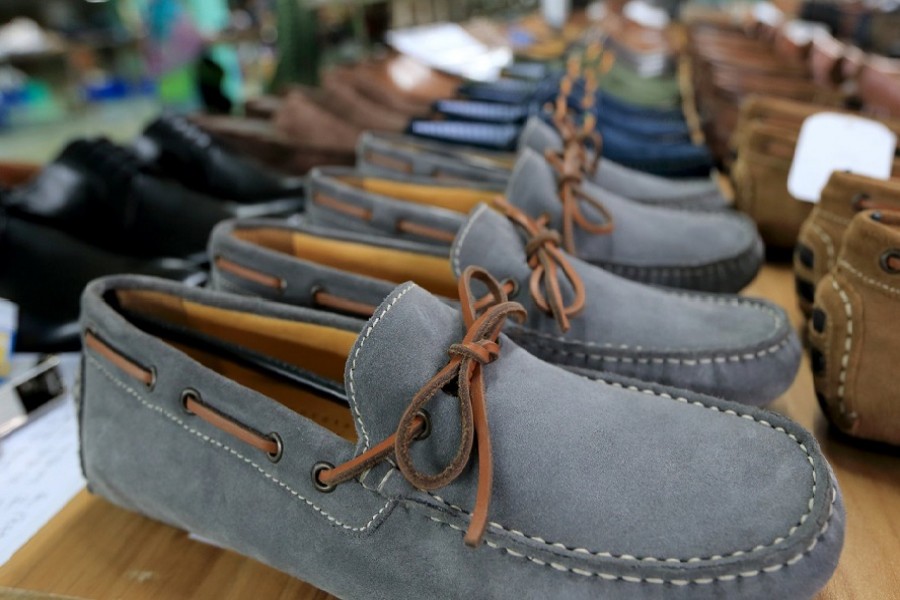Leather, now-a-days, is the second largest export sector of Bangladesh. Since pre-liberation period to the early 90s, leather sector had been successfully occupying the third position in the list of the exporting sectors. In those days export was limited to mostly wet blue leather. In order to encourage manufacture of more value-added products, the government imposed ban on export of wet blue leather in 1990. Despite problems for the entrepreneurs that followed the ban, this bold step actually introduced a new era in the history of the development of leather sector. Entrepreneurs found no other alternative but to modernise their factories and it was the beginning of crust and finished leather production in the country.
In the last 10-12 years, Bangladesh witnessed an encouraging growth in developing leather products manufacturing industries. The number of footwear and other leather product manufacturing industries has exceeded 3000 in the said span of time. Capacity of these industries for using crust and finished leather produced by the tanneries is increasing every year. Last 5 years data show that the volume of export of crust and finished leather is declining while earning from leather products is on the rise. This goes to explain increasing use of crust and finished leather in manufacturing leather products for both export and domestic consumption. Decrease in export of crust and finished leather does not necessarily indicate that its export market is shrinking. Rather, it will not be unfair to expect that the day is not far when export of crust and finished leather will be bare minimum, or we will require to import crust and finished leather to cater for our leather product manufacturing industries.
Presently, our products are being exported to many destinations in Asia, Europe, North America and recently in Africa and South America. But challenges and barriers are many. Our products face hard competition with similar products of developed and developing countries in respect of both quality and price. Developed countries like Germany, Italy and Spain are producing both high quality and high priced products. They have developed brands of their products that have earned worldwide fame. On the other hand, countries like India and China are well advanced in producing myriad varieties of leather products cashing in on their huge production scale.
Leather products are treated as symbols of status and refined taste in the fashion world. Fashion changes frequently, and to cope with the changing demand of buyers, industries manufacturing leather products also need frequent modernisation that requires huge investment. Entrepreneurs of a country like Bangladesh cannot afford such big investments. Share of Bangladesh in the global market for leather and leather goods is very insignificant at present (less than 0.01 per cent). Private sector investors find it difficult to keep pace with the fast moving fashion world.
Developing brands of leather products is another challenge for Bangladesh. There is a noticeable campaign of humanitarian and environmental organisations raising allegations against our leather sector of polluting environment, using child labour, violating labour rights, not using eco-friendly leather in manufacturing leather products and so on. They discourage manufacturing and marketing companies of famous brands to purchase their commodities from Bangladesh. Some unscrupulous foreign buyers take advantage of this situation. They put the pre-condition of not mentioning country of origin on our products. Many of our manufacturers are exporting shoe upper to foreign buyers who, in turn, resell them after fixing the sole to brand companies at much higher price.
In the last 2/3 years market price of raw hide and skin witnessed a sharp decline. Various reasons like shrinking of demand for crust and finished leather in export market, failure of Central Effluent Treatment Plant (CETP) in the Tannery Industrial Estate are responsible for this scenario. If these problems cannot be addressed, smuggling of raw hide will increase creating raw materials crisis for the tanneries.
Despite these and other unfavourable factors in international market, leather sector of Bangladesh still dreams of bright prospect. Almost all the developed countries have shut down their tanning industries because of environmental pollution. Others have declared a time line to take similar steps in near future. But their leather products manufacturing industries and fashion houses are growing. Where do they get their main raw material-- crust and finished leather from? Obviously, they have to depend on countries like Bangladesh. The propaganda that is responsible for the reluctance of the companies of famous brands to procure leather products from Bangladesh is that we do not use eco-friendly leather in manufacturing leather products. Recently, our tanneries have been relocated to a new Industrial Estate with a modern Central Effluent Treatment Plant (CETP). If the project is completed successfully, production of pollution free leather will be possible and it may put an end to the long existing problem.
Vietnam having an insignificant livestock population has cut a significant and important figure in leather trade. Bangladesh owns 2 per cent of the world livestock population. Weather, climate and environment of our country are congenial to livestock rearing. Food habit of animals, absence of barbed wire fencing in our fields and the rearing process practised by our farmers also contribute to the high quality of hides and skins of our cows, buffaloes, goats and sheep. In fact, these are our comparative advantages. If we can make good use of these advantages we can build and enhance the capacity of our leather sector not only to compete but also to have a decent share in the international market of leather, leather goods and footwear.
Syed L. Ali Bahram is a free lancer and Md. Jainal Abedin is a former.
Addl. Secretary of the government.


